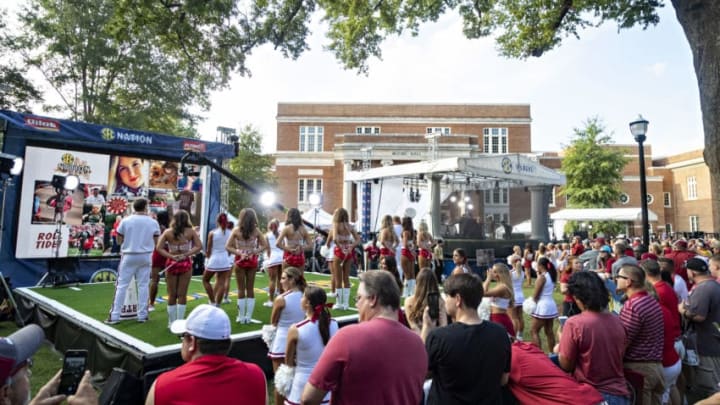SEC football fans want to see the season happen, but is it really worth it?
The common public perception of college football is “follow the money”, and nowhere is this more true than when it comes to SEC football programs. With prospects for the 2020 season ranging anywhere from “unsure” to “ain’t happening”, the money suddenly comes to the forefront even more.
The SEC disbursed $651 million of total revenue among the 14 member institutions for the 2018-19 fiscal year, which ended August 31, 2019. That comes to $44.6 million per school.
According to the conference, that total comes from “television agreements, postseason bowl games, and the College Football Playoff and the SEC football championship game, as well as the league’s men’s basketball tournament, the NCAA Championships, and a supplemental surplus distribution.”
So, it’s clear, not having a college football season — or even a delayed or abbreviated season –stands to cost every SEC school a lot of revenue, especially being that any potential money stemming from the 2020 SEC and NCAA tournaments has already been scrapped thanks to the coronavirus pandemic.
Besides college basketball, the pandemic has also effectively killed the end of the NBA and NHL regular seasons, delayed the start of the MLB season, and even forced the PGA to move The Masters Tournament until the end of the year.
Yet, here we are, with SEC schools returning to drills and workouts on June 8, as allowed by the NCAA.
College football is the first real opportunity to return to some sort of sports normalcy since the pandemic really took root in March, and fans are desperately looking for something to cling to that will help return to that normality.
We all want to see our favorite SEC football teams return to action. Hearing marching bands, smelling tailgate food, and watching College GameDay on a Saturday morning would seem to be the magic elixir needed for a nation of fans who are in pandemic-fatigue mode.
But is it worth it? Is the risk too high?
The truth of COVID-19 is that we don’t seem to know any real truth. A strain of virus that, until January, had never really been seen or studied by medical professionals and infectious disease experts has caused a paradigm shift in how the world operates.
Messages have been, at times, mixed from organizations such as the CDC and the World Health Organization. Both key groups have walked back (and then forward again) on instructions as to how best protect the public with things such as gloves and masks and disinfectants.
The virus was said to linger on surfaces, something that has since been refuted. At first, there was no danger of the virus being transferred in the air, until it was discovered that air “droplets” containing the virus could linger for hours.
The information seems to change at will, and with so much still to learn about a virus for which there is no vaccination or preventative medication, it seems maybe the thought of college football player safety is actually an afterthought.
SEC football and player safety shouldn’t be an afterthought
Football is a contact sport, and within minutes of a game or practice beginning, there are bodily fluids such as sweat, saliva, and even blood that other players can come in close contact with. It’s simply unavoidable.
Masks and gloves may help to a certain degree, but there is no possible way to “social distance” on a football field – not even when running a spread formation.
Professional athletes in the four major sports leagues have unions and the power to vote down any proposal for returning to play they deem unsafe. College players are at the mercy of administrators, coaches, and the will of the fans.
While athletic directors are forced to mull over the possibility of no or little fans in attendance at games and how that will affect the bottom line, players are faced with the possibility that entering the field of competition could potentially cost them their lives.
And they aren’t even being paid to do it.
There simply isn’t enough reliable information about this virus for anyone to know that returning to a close-quartered contact sport couldn’t be potentially dangerous.
No, it may not cause a huge spike in virus cases, but If even a single college football player is diagnosed with COVID-19, it makes the idea of playing this fall suspect at best. If just one player should die as a result of the virus, then the $651 million price tag is simply too high.
None of us want to follow the money to the graveside of a young man simply because we wanted to be entertained and feel normal. None of us should care about the money so much as to endanger the lives of these players.
Yes, the loss of revenue would hurt schools. Some programs outside of the Power-5 leagues could even be shut down. But those players would have the option of transferring to another school and playing football elsewhere next season. That possibility doesn’t exist while dying on a respirator.
COVID-19 may be something the world has to live with as a mitigated risk for years to come, and it may very well be at that point now. The truth is, sixth months worth of data isn’t enough to know for sure.
We all want SEC football — and all college football — to come back and make us feel normal again. Hopefully, the decision to move forward with the season won’t have tragic results.
